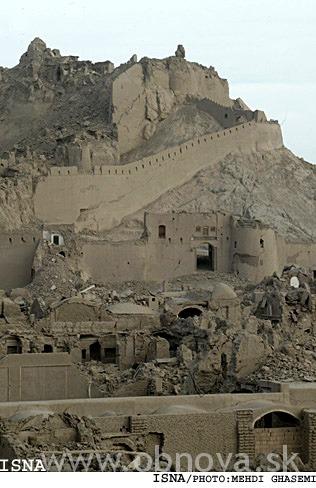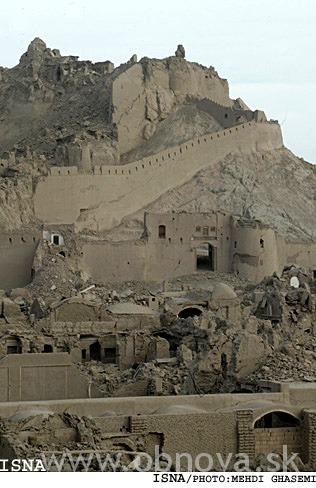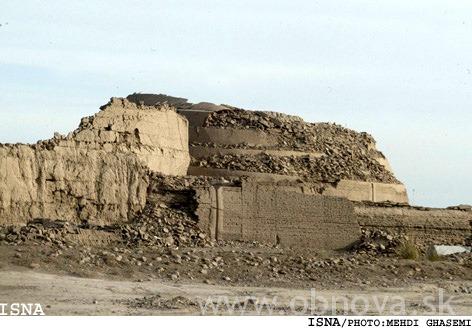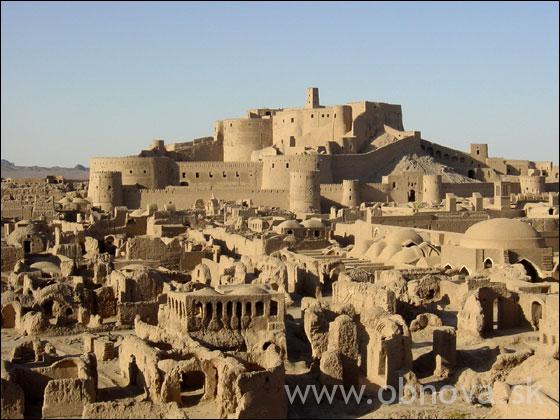Italy ready to help reconstruct Iran’s historic Bam quarter

Italy on Saturday announced its readiness to help reconstruct Arg-e Bam, the historic quarter of the southeastern city of Bam which has been destroyed as a result of the Friday killer quake by over 90 per cent, IRNA reported from Rome. Director General of the Italian Foreign Ministry for Mideast Affairs and former Italian ambassador to Tehran Ricardo Cessa told Iran’s Ambassador to Rome Bahram Qasemi that his country has the appropriate experience to help reconstruct the ancient Arg-e Bam.
The fort city of Bam has been renowned for its 2,000-year-old citadel

Arg-e Bam, the world’s largest mud-brick structure.
A strong earthquake with a magnitude of 6.3 degrees on the Richter scale rocked the city of Bam in Kerman province on Friday, killing thousands of people and injuring tens of thousands of others.
Meanwhile, several teams from the provincial cultural heritage department have been dispatched to the region to investigate the case and offer assistance.

Over 90 precent of Arg Citadel demolished
The United Nations Educational, Scientific and Cultural Organization (UNESCO) announced in Tehran on Saturday that it will assign a delegation of specialists to inspect Bam Citadel and assess the extent of damage inflicted on the historical monument, IRNA reported.
According to foreign news agencies, a cultural heritage expert from the Paris-based UNESCO office, Monir Bouchkani, declared that he organization has sent a letter in this respect to President Mohammad Khatami.
“We would do our best to send our most experienced specialist to the quake-hit area to inspect the demolished Bam Citadel and survey the prospect of its reconstruction,” she added.

The 2,500-year-old citadel located on top of a giant rock to the northeast of the ancient city of Bam has been greatly damaged by the Friday 6.7-Richter earthquake and turned into a rubble.
According to her, the collapsed citadel is of the world-famous mud-break monuments which is listed by the UN as a major historical building and a global symbol.
The UN started drawing up a list of the significant ancient monuments in 1978 with the objective to protect them.
Meanwhile, ‘The Tartar Steppe’, Valerio Zurlini’s epic nightmare and a screen adaptation of Dino Buzzati’s novel was shot in Bam Citadel by Darius Dadivar some 27 years ago.
The movie was made in 1976 with an exceptional cast of actors including Jacques Perrin, in the leading role. Vittorio Gassman, Giuliano Gemma, Phillipe Noiret, Jean-Louis Trintignant, Max von Sydow, Laurent Terzieff, Fernando Rey and Francisco Rabal.
The Italian painting by Giorgio de Chirico, ‘La Torre Rossa’ mainly convinced the Italian filmmaker to shoot the film on location at the famous Fortress of Bam, 200 kms south of Kerman.
The ancient city of Arg-e-bam is made entirely of mud bricks, clay, straw and trunks of palm trees.
The seriously-harmed 20-hectare citadel originally founded under the rule of Sassanids (224-637 AD) was a complex consisting of four interconnected fortifications with 48 watchtowers.
Some of its structures dated back to pre-12th-century period mostly built during the Safavid period (1502-1722).
The citadel looking like a gigantic sand castle was one of the major attraction for film buffs and tourist.
Besides the country offered many exotic landscapes for the Western eye and a number of films were to be shot on location such as Aghata Chrisite’s ‘The Ten Little Indians’. However, the victory of the 1979 Islamic Revolution put an abrupt end to other major European or American co-productions.
According to the latest report, over 90 percent of the citadel comprising several entrances, a public gathering site, the rulers residence, two gates, a stable, a garrison and an dministration center have so far been destroyed.
Zdroj:
http://www.payvand.com/news/03/dec/1193.html
27. 12. 2003


